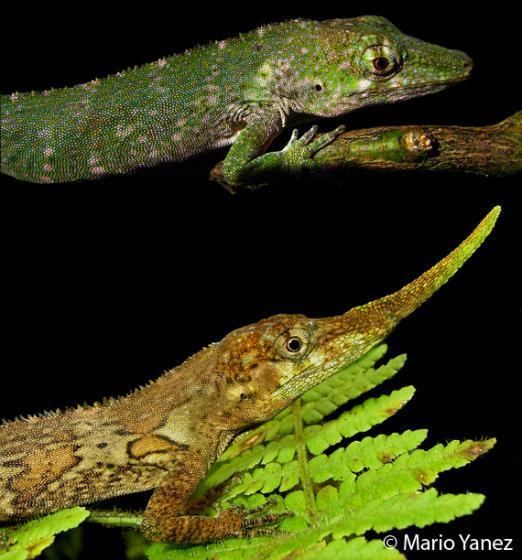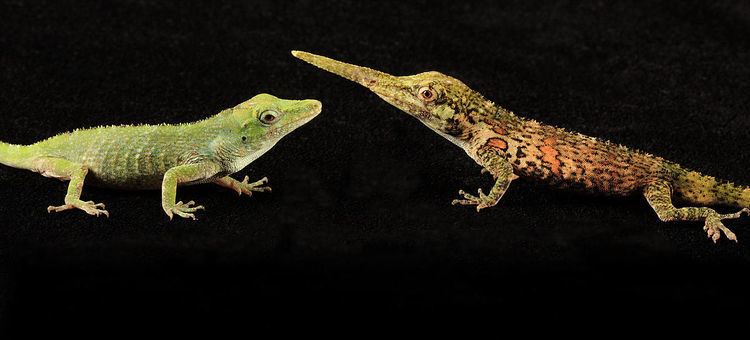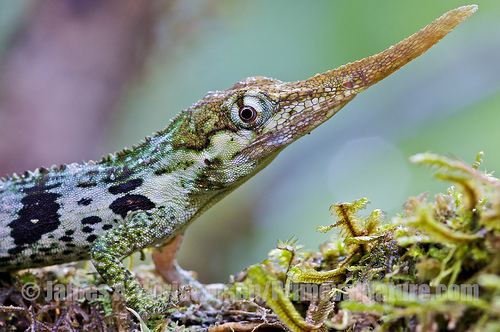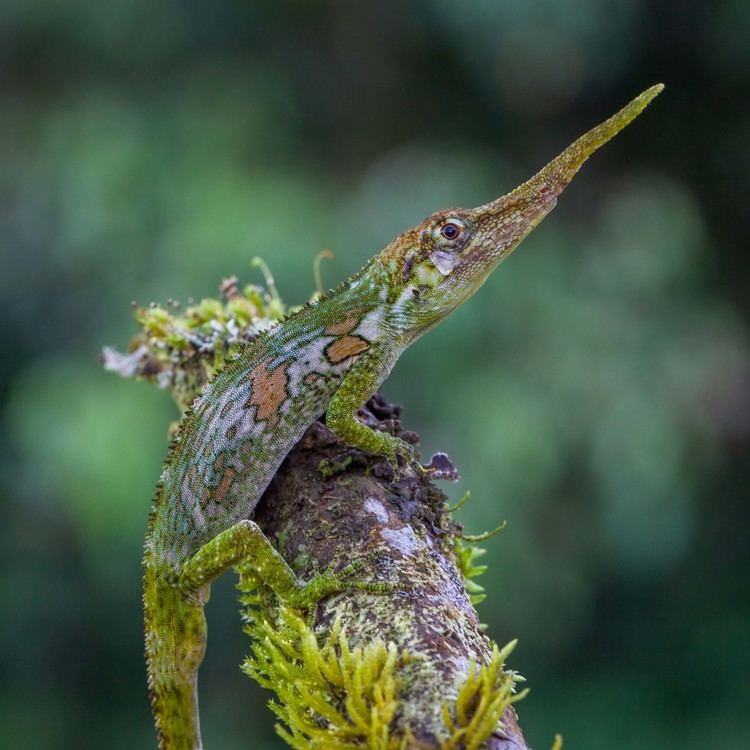Class Reptilia Suborder Iguania Rank Species | Phylum Chordata Family Dactyloidae | |
 | ||
Similar Blue anole, Anoles, Grenada tree anole, Polychrotinae, Allison's anole | ||
Adult male anolis proboscis
Anolis proboscis, commonly known as the Proboscis anole, Ecuadorian horned anole or Pinocchio lizard, is a small lizard belonging to the genus Anolis of the family Dactyloidae. A single male specimen was discovered in 1953 in Ecuador and formally described by Peters and Orces in 1956, but the species then went unreported until a rediscovery in 2007. Its currently known habitat is a small stretch of vegetation along an Ecuadorian highway. It has been classified as Endangered by the IUCN due to its restricted distribution and ongoing habitat loss.
Contents
- Adult male anolis proboscis
- Male anolis proboscis horn bending for manuscript
- Description
- Distribution and habitat
- Rediscovery
- Conservation
- References

Male anolis proboscis horn bending for manuscript
Description

Anolis proboscis has a total body length (excluding tail) of roughly 50–75 mm. Males possess a conspicuous proboscis, an elongated structure arising from the middle of the snout and about 10–20 mm in length; it appears to be used in courtship displays, as is the dewlap that is present in both sexes. There appear to be several colour morphs, with colouration ranging from yellowish-green to brown with orange or black markings, and generally a white belly.
Distribution and habitat

Based on the few localities known, Anolis proboscis inhabits montane forest habitats, where it keeps to high trees. Specimens have predominantly been found in primary and secondary vegetation along a well-traveled dirt road. Only five localities in total are currently known, with a maximum distance of 13 km between the two furthest ones. While the area of occurrence includes pasture land and secondary forest, it is likely that the species also occurs in other mid-altitude (1,200-1,650 m) areas in the Ecuadorian Andes.
Rediscovery

Anolis proboscis was presumed extinct when it was not seen after the original collections, until it was rediscovered in 2007. In August 2009, a herpetology expedition from the University of New Mexico rediscovered the species in a remote region of Ecuador. In total, they found five individuals including three males and the first two females ever seen and collected. Since 2009, several other expeditions were able to relocate the species in remote regions of Ecuador.
Conservation

The species is currently classified as Endangered due to its possibly restricted distribution in combination with ongoing threats in the form of habitat loss from logging, human settlement, agriculture, and grazing.

